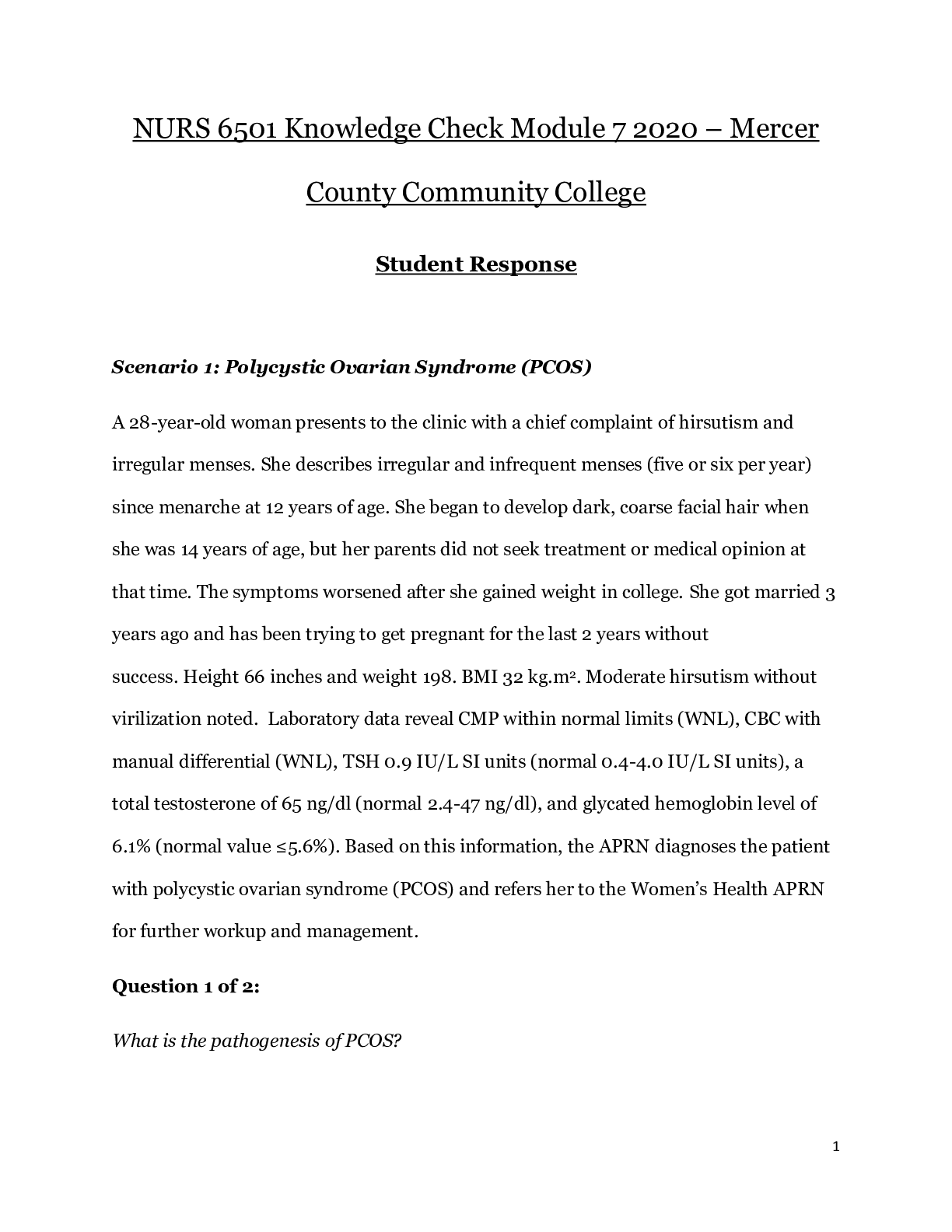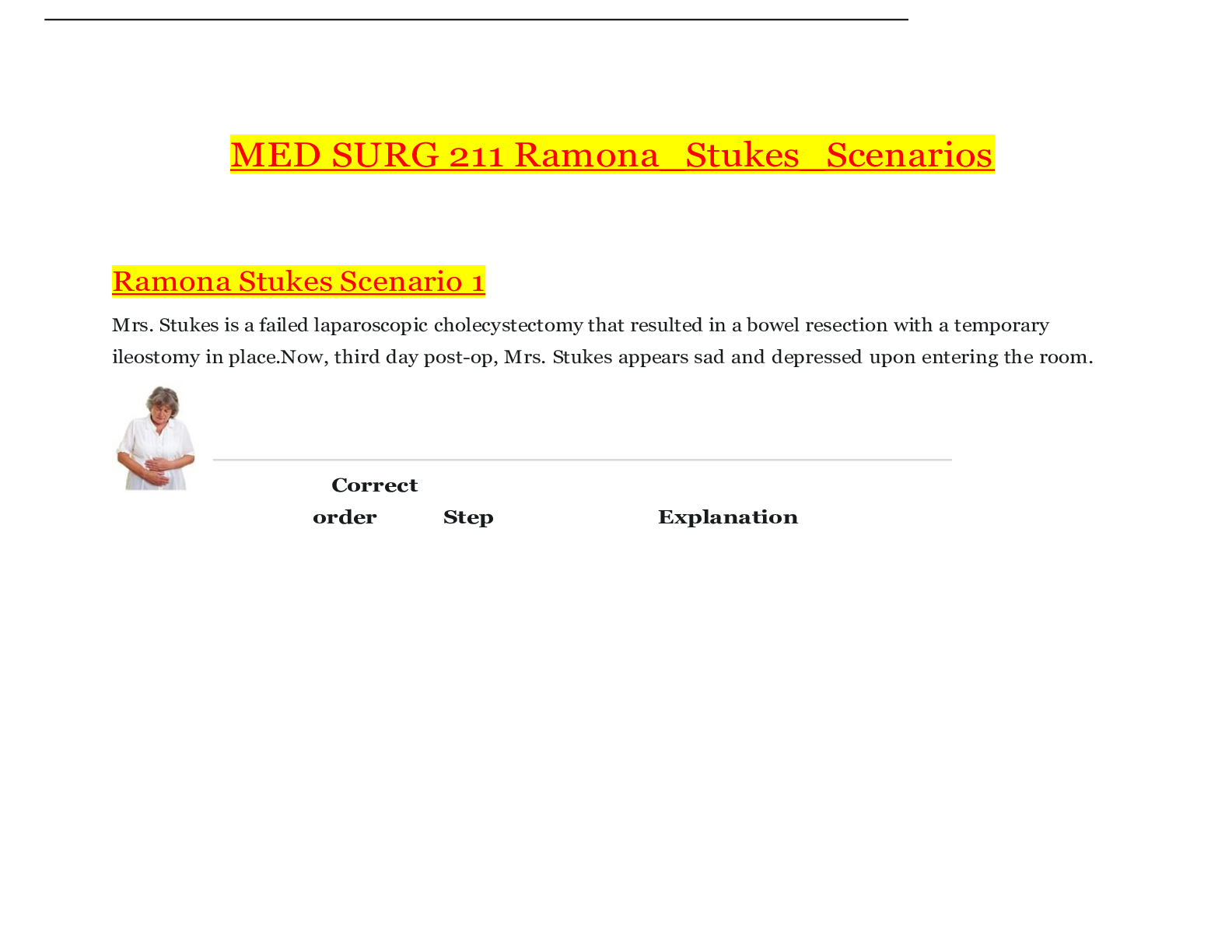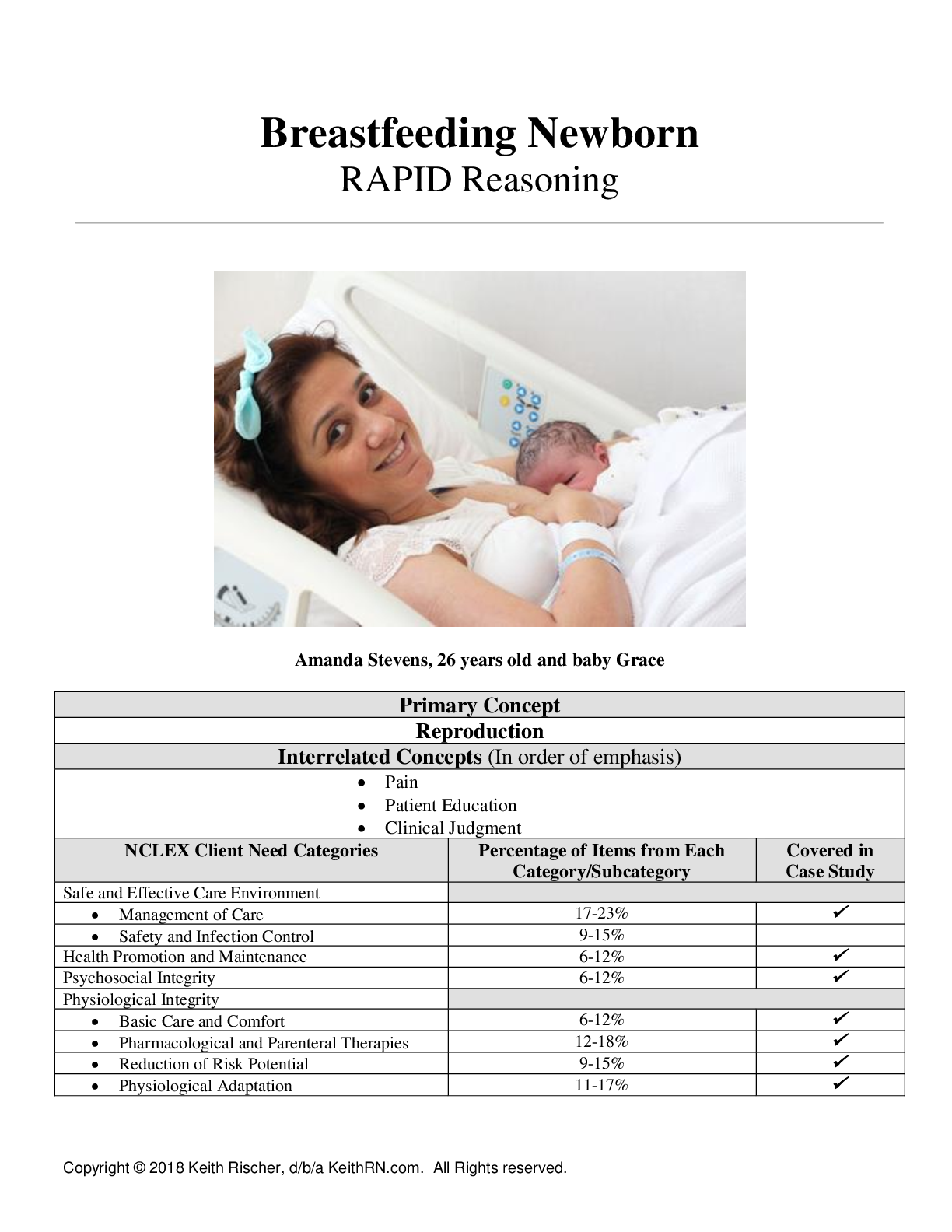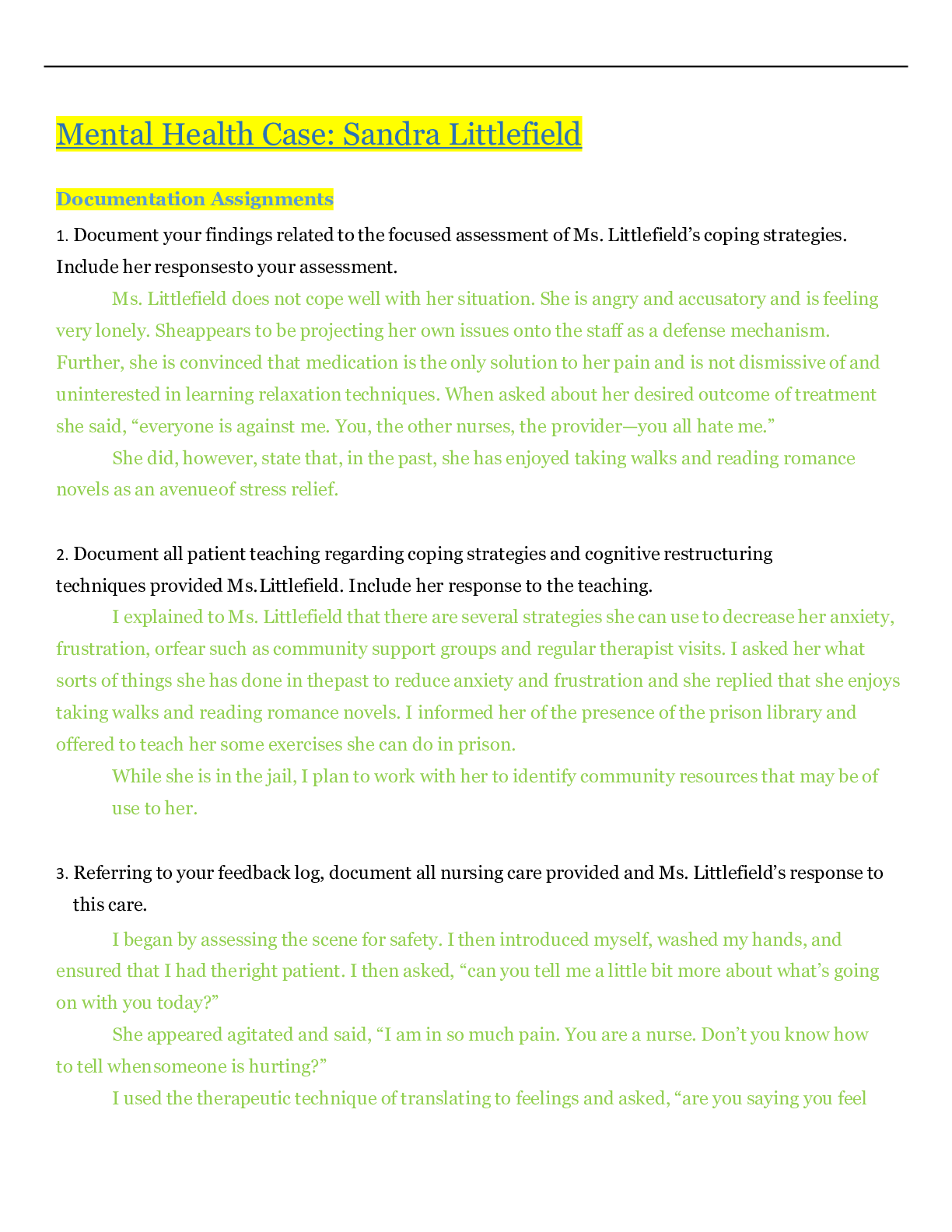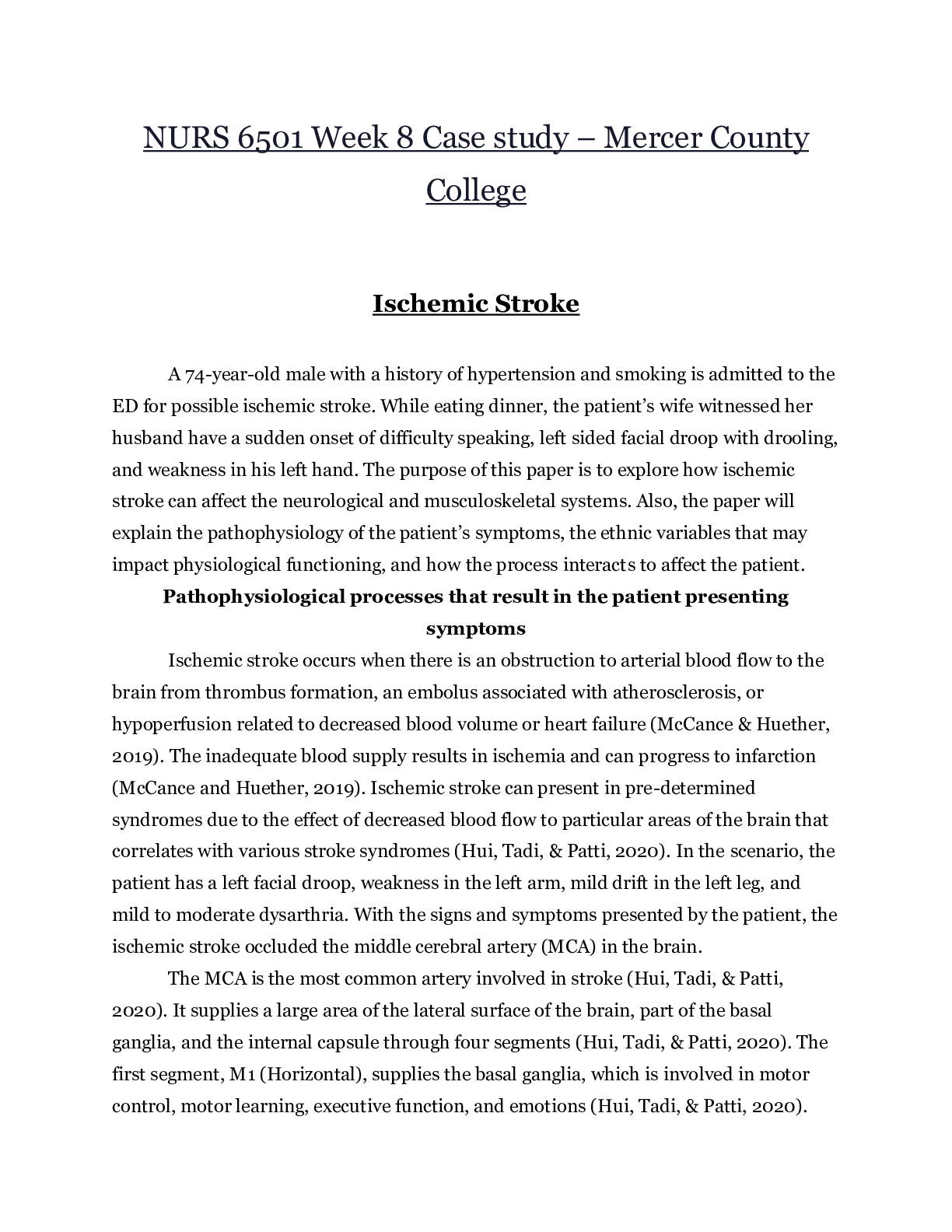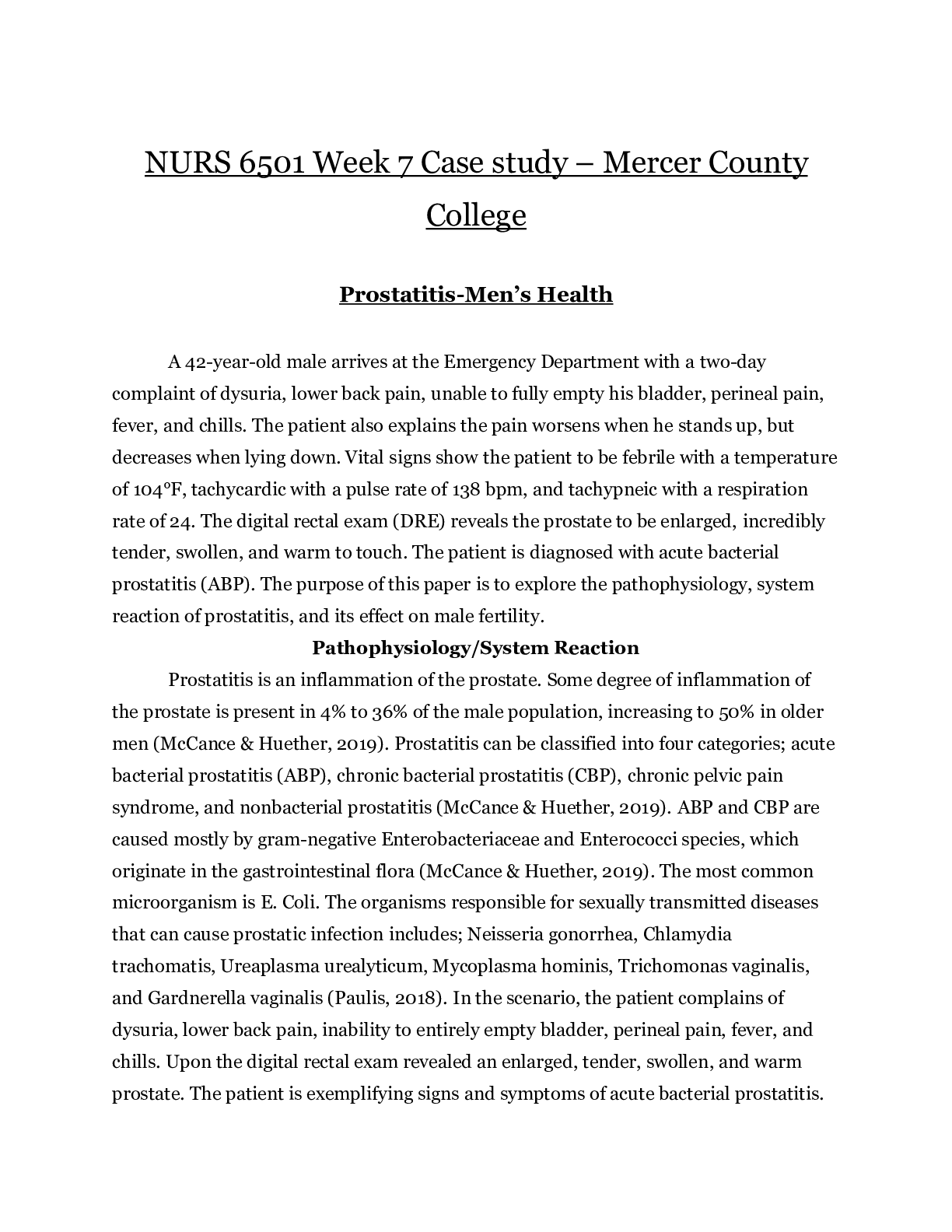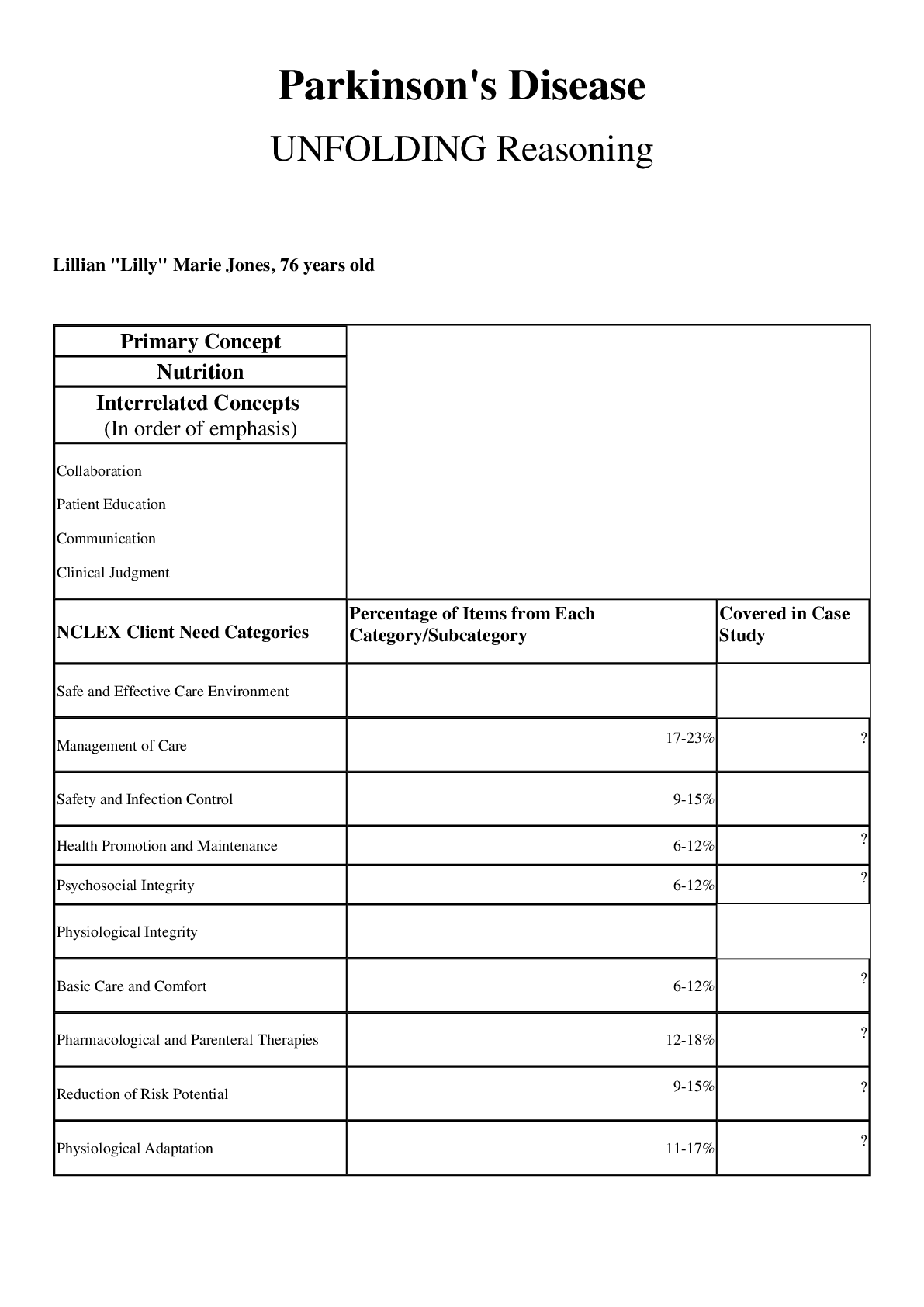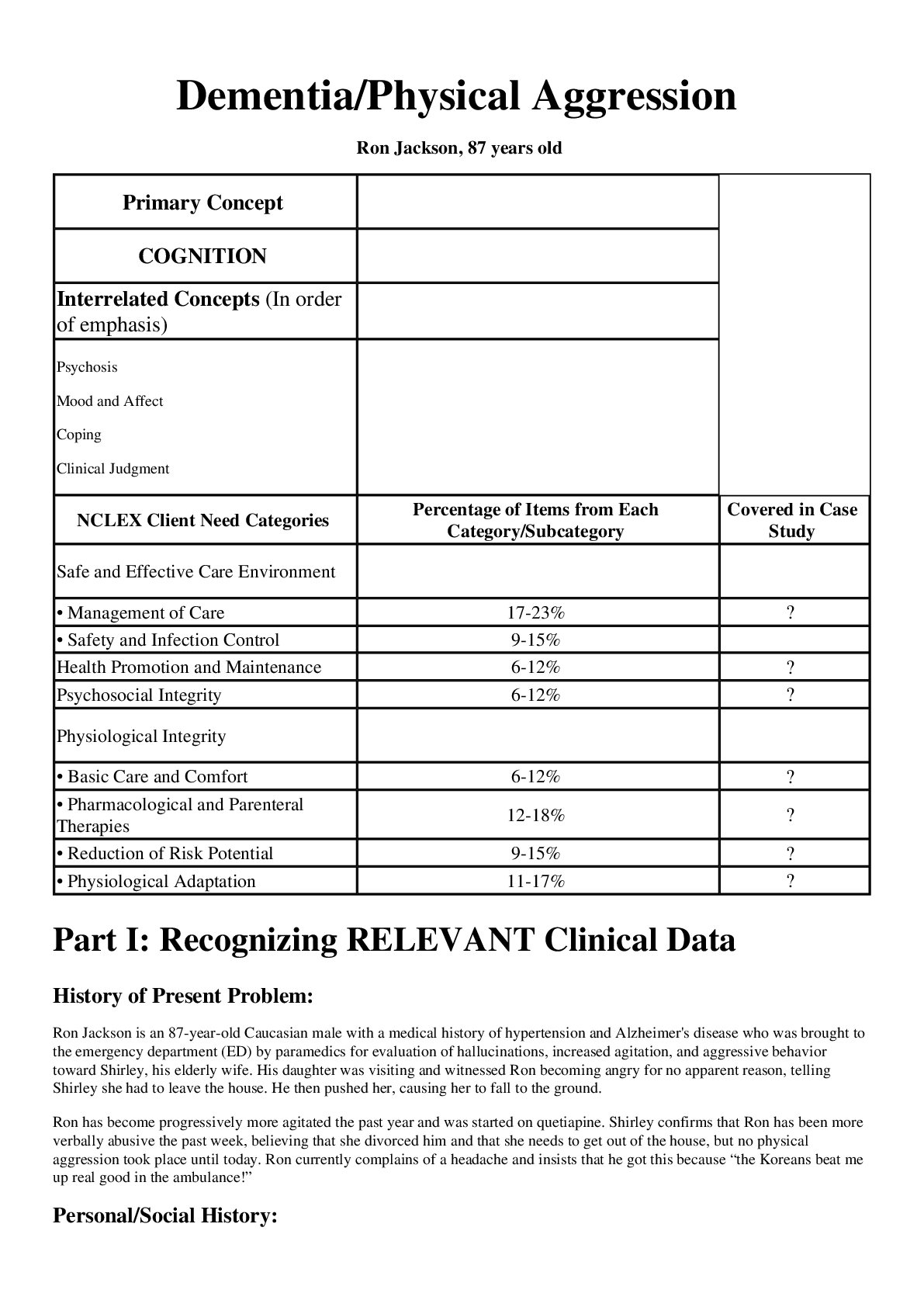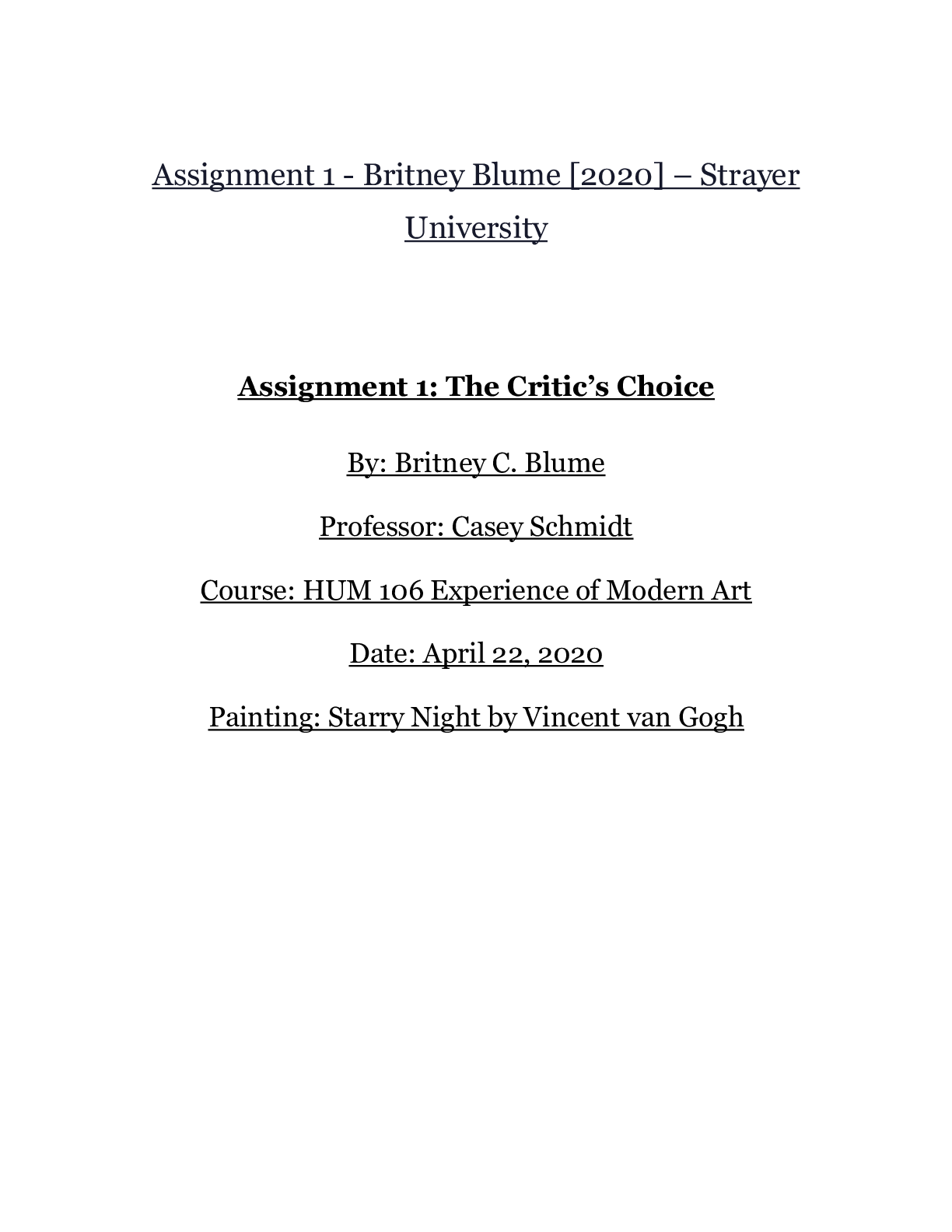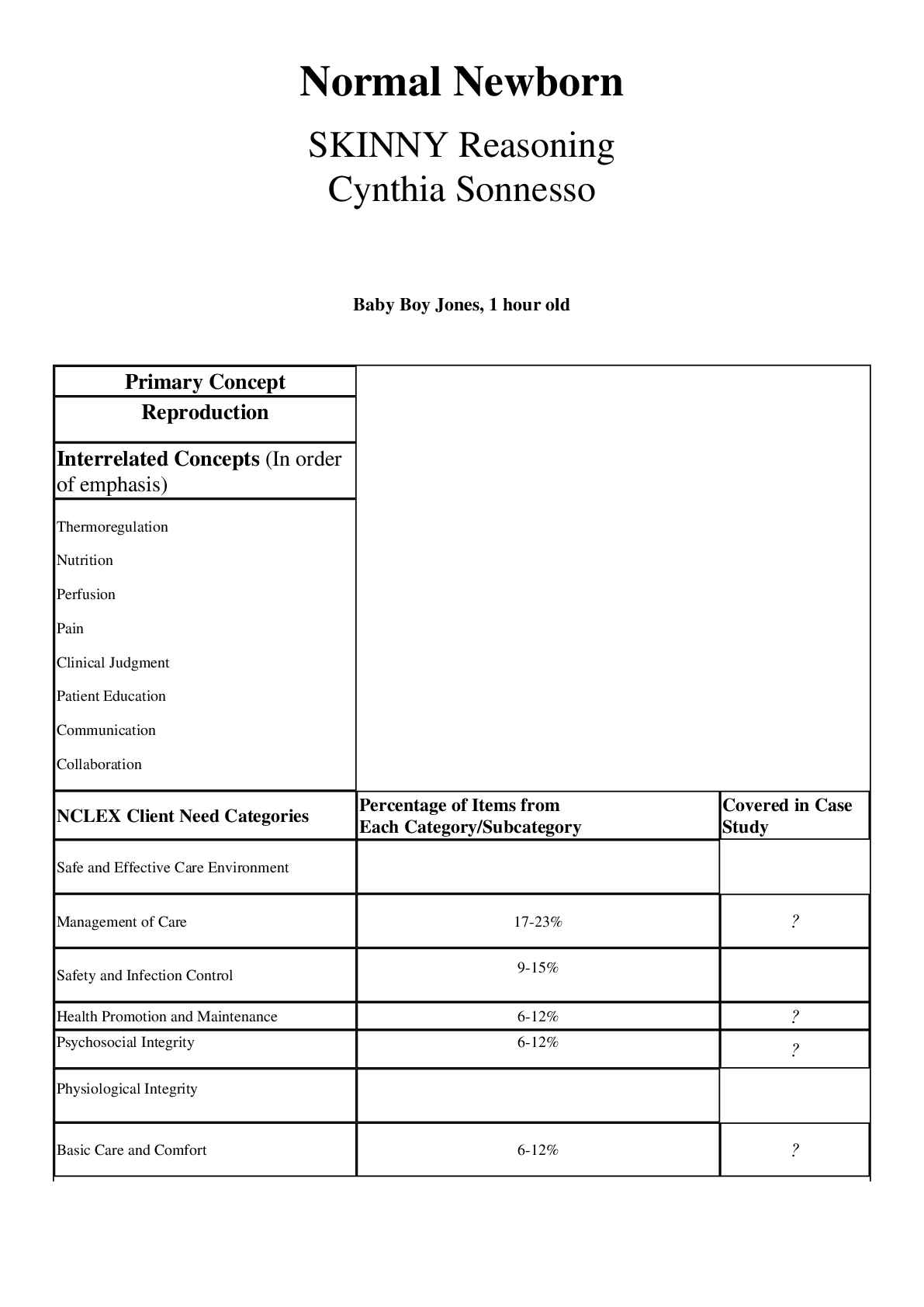*NURSING > CASE STUDY > Morgan Adams _ Dementia UNFOLDING Reasoning_2020 | Dementia UNFOLDING Reasoning_A Grade (All)
Morgan Adams _ Dementia UNFOLDING Reasoning_2020 | Dementia UNFOLDING Reasoning_A Grade
Document Content and Description Below
Dementia UNFOLDING Case Study Morgan Adams, 72 years old Primary Concept Cognition Interrelated Concepts (In order of emphasis) • Pain • Mood and Affect • Psychosis • Clinic... al Judgment • Patient Education • Communication • Collaboration NCLEX Client Need Categories Percentage of Items from Each Category/Subcategory Covered in Case Study Safe and Effective Care Environment • Management of Care 17-23% ✓ • Safety and Infection Control 9-15% Health Promotion and Maintenance 6-12% ✓ Psychosocial Integrity 6-12% ✓ Physiological Integrity • Basic Care and Comfort 6-12% ✓ • Pharmacological and Parenteral Therapies 12-18% ✓ • Reduction of Risk Potential 9-15% ✓ • Physiological Adaptation 11-17% ✓ History of Present Problem: Morgan Adams is a 72-year-old male with a history of heart failure, COPD, hypertension, diabetes type II and dementia who has been hospitalized for exacerbation of heart failure three times the past six months. He is now a resident of Pineville Healthcare Center, a local long-term care facility the past four months because his dementia progressed, and his wife Rita was unable to care for him. When Rita visited Morgan this morning, she reports to the nurse that he is more confused and is concerned because Morgan is easily angered. Morgan insists that he sees his friend Roger, who served with him in the Navy, is in the room, but he died ten years ago. Rita approaches the nursing station with tears in her eyes and states, “What is happening to my husband? This just isn’t like Morgan to act like this! Please do something to help him!” Personal/Social History: Morgan has been married to Rita for 51 years. They have three adult children who visit him weekly. Rita comes to visit Morgan every day after work. Morgan was a salesman for 35 years before he retired seven years ago. Morgan believes he is at Pineville Healthcare Center for rehab, but his family is concerned that it is no longer safe at home if he were alone. Rita was just awarded guardianship due to his declining mental status. RELEVANT Data from Present Problem: Clinical Significance: 72 yo male w/ HF, COPD, HTN, DMII and dementia. Hospitalization Hx for HF x3 in past 3 mos. Resides in long term care of dementia. LOC change today w/ hallucinations. The clinical significance of the patient’s behavior is that he is experiencing confusion and could be experiencing some confusion related to his heart failure or COPD Where he is not receiving enough oxygen/blood (hypoxia or hypoxemia) flow to his brain. Also, medication SE can be contributing to this, too. Does he have a UTI or other infection? RELEVANT Data from Social History: Clinical Significance: Patient and wife have been married for 51 years have 3 children. Rita is now pt’s guardian. Pt does not understand why he is at SNF. Patient is no longer able to make his own decisions. His confusion may also be attributable to unfamiliar surroundings and not understanding why he is there. He is well loved by his family who make sure to visit him. They are worried that he is not “himself”. What is the RELATIONSHIP of your patient’s past medical history (PMH) and current meds? (Which medication treats which condition? Draw lines to connect) PMH: Home Meds: Pharm. Classification: Expected Outcome: • COPD • Hypertension • Heart failure • Diabetes type II • Dementia Color coded match of drugs with the corresponding indication for use. Please know that some of the green and dark blue boxes can be interchangeable, as medications such as lisinopril, atenolol, and hydrochlorothiazide can be used to treat both hypertension and heart failure. 1. Fluticasone/salmeterol diskus 1 puff every 12 hours 2. Albuterol MDI 2 puffs every 4 hours PRN shortness of breath 3. Lisinopril 10 mg PO daily 4. Atenolol 25 mg PO BID 5. Furosemide 20 mg PO daily 6. Hydrochlorothiazide 25 mg 1 tab PO daily 7. Metformin 1000 mg PO BID 8. Glyburide 10 mg PO BID 9. Memantine 5 mg PO daily 1. Long Acting Beta-2 agonist/Corticosteroid combination inhaler; anti-asthmatic; anti-inflammatory 2. Selective Beta-2 adrenergic agonist; bronchodilator 3. Long-acting angiotensin converting enzyme inhibitor; antihypertensive 4. Cardio Selective-Beta blocker; antihypertensive 5. Sulfonamide; antihypertensive; diuretic 6. Benzothiadiazide; diuretic; antihypertensive. 7. Antihyperglycemic; biguanide 8. Second generation sulfonylurea; antihyperglycemic 9. N-methyl-D-aspartate (NMDA) receptor antagonist/antidementia 1. Chronic treatment and maintenance of COPD & asthma producing decreased inflammation and histamine response in lung tissues thereby increasing ability to exchange gases. 2. Acute treatment for COPD & Asthma relaxing bronchial smooth muscles in order to exchange gases during an acute exacerbation of COPD. 3. Decrease of hypertension and heart failure as a result of suppression of the renin-angiotensin-aldosterone system. 4. Management of hypertension alone or in combination with other anti-hypertensives by giving rise in intracellular calcium and triggering the ryanodine receptors to release calcium stored in the sarcoplasmic reticulum (SR), thus increasing cardiac contractility. And, also off label- management of HF. 5. To decrease edema caused by HF and also to decrease hypertension via inhibition of sodium-potassium-chloride cotransporters in the loop of Henle which results in increased excretion of water along with sodium, chloride, magnesium, calcium, hydrogen, and potassium ions. 6. HCTZ acts on the proximal region of the distal convoluted tubule, reducing reabsorption of water. This both reduces blood pressure and water retention which can cause edema. 7. Serum glucose is reduced by metformin’s action of decreasing hepatic glucose production (gluconeogenesis), decreasing the intestinal absorption of glucose, and increasing insulin sensitivity by increasing peripheral glucose uptake and utilization. 8. Glyburide acts by closing ATP-sensitive potassium channels on pancreatic beta cells stimulating release of insulin thereby reducing blood glucose. 9. Memantine is an uncompetitive (open-channel) NMDA receptor antagonist, preventing glutamate action on this receptor. This action helps to decrease glutamate One disease process often influences the development of other illnesses. Based on your knowledge of pathophysiology, (if applicable), which disease likely developed FIRST that created a “domino effect” in Morgan’s life? COPD likely occurred first… COPD, when it becomes severe, can affect the heart by causing a development in right-sided heart failure. This happens because chronic lower oxygen levels create increased blood pressure in the lung’s arteries. This is known as pulmonary hypertension where the lung’s blood vessels narrow or become blocked or even destroyed. All of this leads to the heart becoming weaker and blood is harder to distribute throughout the body. Body tissues and organs do not perfuse as efficiently, thus decreasing oxygenation. Oxygen deficits to the brain’s tissues doubly increase the chances of developing dementia. Therefore, Morgan’s diseases are a cascade of one disease setting off the next, and so on. Patient Care Begins: Current VS: P-Q-R-S-T Pain Assessment: T: 99.8 F/37.7 C (oral) Provoking/Palliative: “Standing and moving.” P: 60 (regular) Quality: “Dull” R: 16 (regular) Region/Radiation: “Lower back” BP: 115/72 Severity: “4/10” O2 sat: 96% room air Timing: “It is always there.” What VS data are RELEVANT and must be interpreted as clinically significant by the nurse? (Reduction of Risk Potential/Health Promotion and Maintenance) RELEVANT VS Data: Clinical Significance: Slight elevation in temperature, and persistent dull, low-grade lower back pain, standing/moving provokes Currently suspecting an infection due to the lower back pain and slightly elevated temperature- possible UTI. I would want to clarify where exactly in the lower back the pain is located and perhaps do a UA. Are kidneys damaged? Mental Status Examination (MSE): APPEARANCE: Dressed in t-shirt and pants. His pants are urine soaked. Wearing a sweater even though it is summer. MOTOR BEHAVIOR: Ambulates with a walker, shuffling gait SPEECH: Clear MOOD/AFFECT: Pleasant, except when talking about being at Pineville Healthcare Center, becomes agitated Anxiety increases, and angry affect displayed; emotionally labile – can become easily angered THOUGHT PROCESS: Generally coherent conversation; can make himself understood THOUGHT CONTENT: Preoccupied with not wanting to be at Pine Healthcare Center. Talks about how they are not helping him. Wants to go home and get his hunting license so he can go hunting. PERCEPTION: Reports having seen a friend, Roger, from the Navy climbing down the side of the building yesterday. No other current evidence of hallucinations INSIGHT/JUDGMENT: Insight – poor- not understanding why he needs to be at a facility and not at home. (thinks he is here for rehab) Unable to recognize own deficits in functioning Judgment Poor-often asks his wife to bring him take-out food (which she does), then he eats an additional dinner in the cafeteria. COGNITION: Alert and Oriented to person and place. Not oriented to time or purpose. Believes it is 2017. Able to recognize it is spring. Short-term memory impaired: Doesn’t always remember that he has eaten; sometimes forgets when wife visits. Long-term memory seems to be intact. Remembers personal history Attention span is adequate when tested. Able to state months backwards INTERACTIONS: Pleasant when spoken to. Hesitant to initiate conversation. SUICIDAL/HOMICIDAL: “If I don’t get out of here soon, I might just walk into traffic.” What MSE assessment data are RELEVANT and must be interpreted as clinically significant by the nurse? (Reduction of Risk Potential/Health Promotion & Maintenance) RELEVANT Assessment Data: Clinical Significance: 1. Urine soaked pants; sweater in summer 2. Shuffling gait 3. Clear speech 4. Mood is agitated & angered at mention of his current residence 5.Thought Process is generally coherent 6.Wants to go home; pervasive thoughts are on the SNF and how he wants to get out 7. Hallucinations of seeing dead friend 8. Unable to recognize decrease in function 9. Cognition is limited to person and place, pt doesn’t remember if he’s eaten 10. Hesitant to initiate conversation 11. “I might walk into traffic” 1.-Have staff help change his pants/incontinence = inf? ; does sweater = chills? 2.-Shuffling gait shows that there may be a loss of muscular coordination, can it be from low potassium from diuretics or dementia increased or extra-pyramidal sx from NMDA? 3.-Can still communicate and make his needs known 4.-agitation, anxiety, anger when talking about SNF reflects his confusion regarding where he is and purpose for being there/ can become confused 5.-Thought process is not yet deteriorated to the point of incoherence 6.-His conversation is stuck on not liking where he’s at, the fact he doesn’t feel they are helping him, this can increase or create confusion 7.- Hallucinations and confusion can indicate signs of delirium 8.-It is difficult to treat someone with low insight, because they become combative or not want to participate in their own care. 9.-Patient is declining in the ability to care for himself which could lead to loss of ADLs and jeopardizing his physical health, too. 10.- Perhaps is declining in social ability 11.-Problem solving capabilities and judgement are on decline. - - - - Continued [Show More]
Last updated: 2 years ago
Preview 1 out of 15 pages
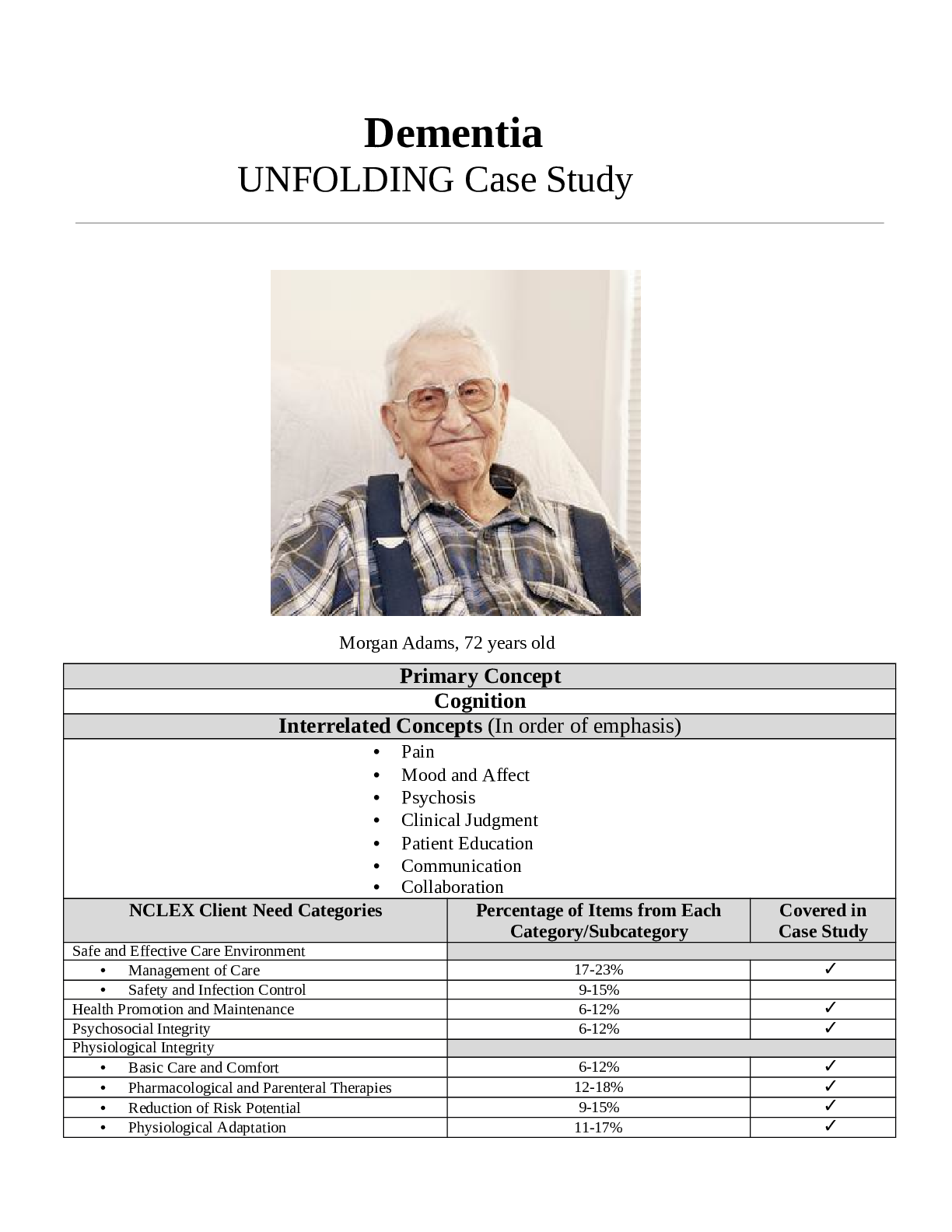
Buy this document to get the full access instantly
Instant Download Access after purchase
Buy NowInstant download
We Accept:

Reviews( 0 )
$10.50
Can't find what you want? Try our AI powered Search
Document information
Connected school, study & course
About the document
Uploaded On
Feb 27, 2021
Number of pages
15
Written in
Additional information
This document has been written for:
Uploaded
Feb 27, 2021
Downloads
0
Views
84



